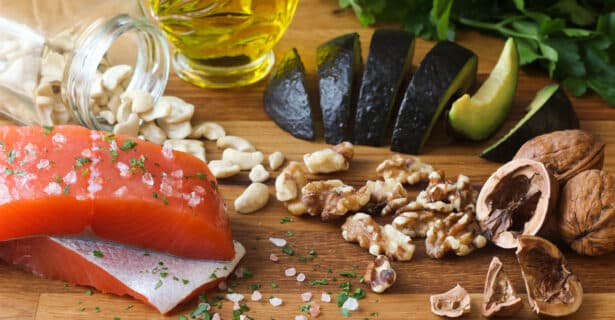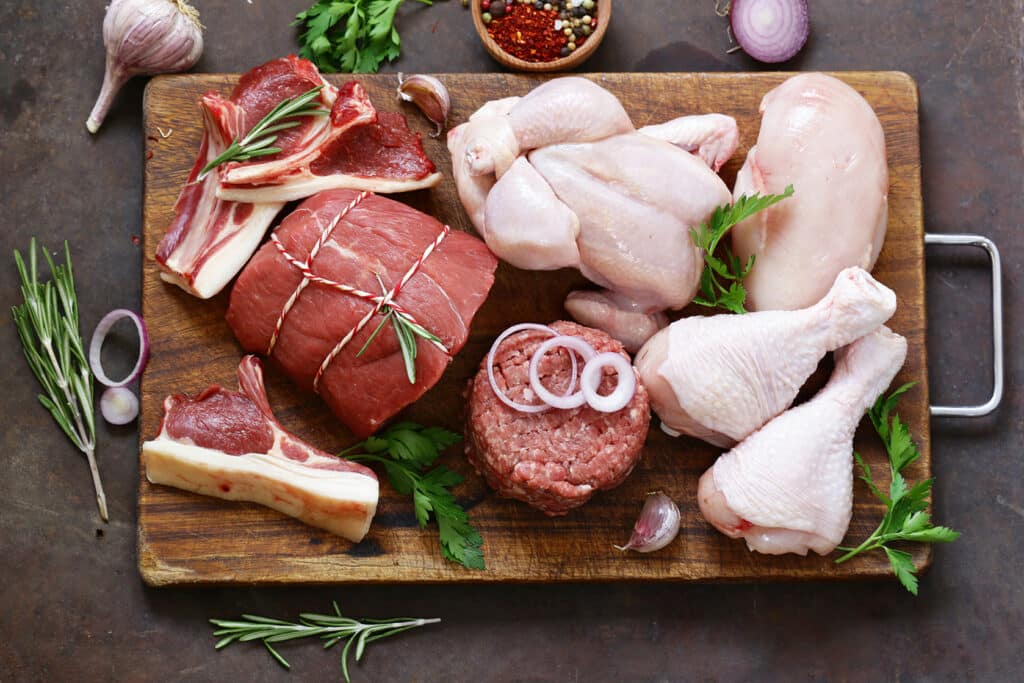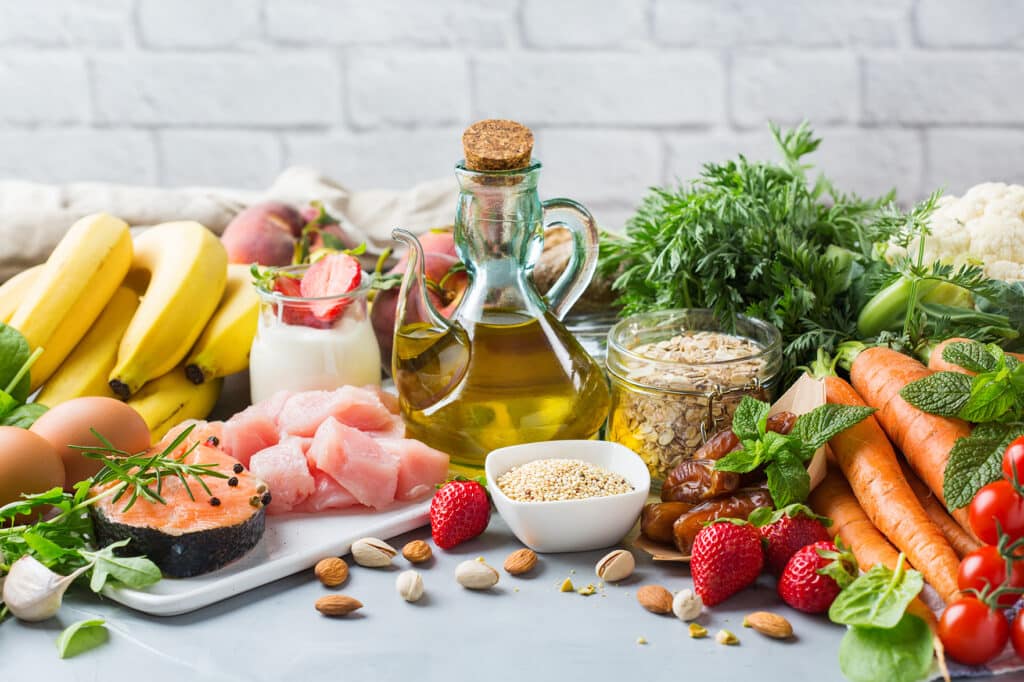
Manage Cholesterol
Reduce Your Risk of Heart Disease
Mediterranean Diet Pattern
People living with diabetes may be at risk for heart disease.
Follow the Mediterranean diet pattern to protect your heart and reduce your risk of heart disease.
People living with diabetes often have high LDL (bad) cholesterol and a higher than normal triglyceride level. Both high LDL (bad) cholesterol and a high triglyceride level puts you at risk for heart disease.
You can protect your heart and reduce your risk of heart disease by eating a Mediterranean diet pattern. A Mediterranean diet pattern is a way of eating and a lifestyle approach to manage your diabetes and health. This diet pattern can improve your health in many ways. Follow this diet pattern to help lower your LDL (bad) cholesterol and triglyceride levels.
Cholesterol
Cholesterol is a wax-like substance found in your body. Your body needs cholesterol to:
- make vitamin D
- make bile (a fluid made by the liver to help break down fats)
- make male and female hormones (testosterone and estrogen)
- keep your cell membranes (the wall that lines the cells in your body) healthy
Your liver makes most of the cholesterol in your body. The rest comes from the animal products you eat. Only animal products have cholesterol. Animal products include meat, fish, eggs, and dairy.
Types of cholesterol in the blood
Bad and Good Cholesterol
There are two main types of cholesterol:
Low density lipoprotein (LDL) cholesterol is often called ‘bad cholesterol’.
High density lipoprotein (HDL) cholesterol is often called ‘good cholesterol’.
What is LDL cholesterol?
LDL cholesterol is often called ‘bad cholesterol’. LDL (bad) cholesterol is a problem when levels get too high in your blood.
- When LDL cholesterol gets too high, it can slowly collect as plaque on the walls of your blood vessels.
- If too much plaque collects, the plaque narrows or blocks your blood vessel. This block prevents blood from getting to your heart or brain.
- When blood cannot get to your heart or brain, you can have a heart attack or stroke.
Replace the amount of foods you eat that contain saturated fat with unsaturated fats to keep your LDL cholesterol low.
What is the healthy target for my LDL cholesterol level?
Your LDL (bad) cholesterol level is measured from a blood test. A healthy target for your LDL cholesterol level is less than 2.0 mmol/L.
What foods increase my LDL cholesterol?
Foods high in saturated fat increase your LDL (bad) cholesterol level. Saturated fats are found mostly in animal foods.
What is HDL cholesterol?
HDL cholesterol is often called ‘good cholesterol’. HDL (good) cholesterol helps carry LDL (bad) cholesterol away from the walls of your blood vessels.
What is the healthy target for my HDL cholesterol level?
Your HDL (good) cholesterol level is measured using a blood test. A healthy target for your HDL cholesterol level is greater than 1.0 mmol/L.
What foods increase my HDL cholesterol level?
Foods that have unsaturated fats (such as omega-3 fats that come from fish) can increase your HDL (good) cholesterol level.

Learn how to shop for healthy meat, fish, and seafood
Triglycerides
Triglycerides are a form of fat that is carried in your blood. People living with pre-diabetes or diabetes often have a higher than normal triglyceride level. High levels of triglycerides increase your risk for heart disease and a heart attack.
High fat foods, sugar, and alcohol can lead to high levels of triglycerides. A Mediterranean diet pattern can lower your triglyceride level.
What Is the Healthy Target for My Triglyceride Level?
A healthy target for triglycerides is less than 1.7 mmol/L for people living with pre-diabetes and diabetes. Ask your doctor about your triglyceride level the next time you get your blood work results from the lab.
Foods That Lower Your Triglyceride Level
Foods that are part of the Mediterranean diet pattern can lower your triglyceride level.
These foods are high in fibre and provide lots of vitamins and minerals that your body needs.
- Aim to include a vegetable and/or fruit every time you eat a main meal.
- Eat a mix of different coloured vegetables. Eating vegetables of different colours will give you different nutrients.
- Choose low glycemic index foods made from whole grains (such as barley, oatmeal, quinoa, brown or wild rice, kasha).
Learn more about the glycemic index » - Add legumes (such as dried beans, chickpeas, and lentils) to foods you already eat. Add a handful of legumes to a green salad or pasta dish.
- Have nuts and seeds as a snack instead of granola bars.
Omega-3 fats are a type of healthy fat found in fish and some plant foods. Omega-3 fats can lower triglycerides and reduce inflammation (damage to the tissues of your body that can lead to disease such as arthritis, heart disease, and cancer).
- Aim to eat fatty fish 3 times each week (fresh or canned). Examples of fatty fish include sardines, trout, halibut, bass, salmon, tuna, and mackerel.
- Eat plant sources of omega-3 fats such as walnuts, ground flaxseed, flaxseed oil, hemp seeds, hemp hearts, chia seed, and canola oil. These omega-3 sources can be added to other foods. Although plant sources of omega-3 fats do not lower triglycerides, they are full of healthy fats, fibre, and other nutrients that are good for your health.
Foods That Raise Your Triglyceride Level
Examples include:
- all types of sugar (raw sugar, white, or brown sugars)
- sweetened drinks
- sweets like pastries, desserts, and granola bars
High glycemic index foods are often highly processed.
Learn more about the glycemic index »
Examples of high glycemic index foods include:
- sugar
- white bread
- instant noodles
Research tells us that there is no safe amount of alcohol you can drink. If you drink alcohol, try to avoid or limit the amount you drink.
Some of the medicines you take may react poorly with alcohol. Talk to your doctor or pharmacist about how your medicines react with alcohol before you have a drink with alcohol in it.
Your triglyceride and blood sugar levels may increase if you mix alcohol with juice or regular pop since these drinks contain sugar.
Trans fats are commercially prepared (factory-made) fats. They are made from partially hydrogenated vegetable oil or shortening. Foods made with trans fats are highly processed.
Trans fats raise LDL (bad) cholesterol and lower HDL (good) cholesterol in your body. They also increase inflammation (damage to the tissues of your body that can lead to disease such as arthritis, heart disease, and cancer).
Trans fats are not healthy for you. They can increase your chances of having heart disease, a heart attack, or stroke.
Examples of foods often made with partially hydrogenated oil or trans fats include:
- crackers and cookies
- vegetables shortening and hard margarine
- deep-fried restaurant or fast foods
- cakes, pie crusts, pastries, donuts, and croissants
- french fries, potato chips, and corn chips
The Mediterranean Diet Pattern
Many studies show that a Mediterranean diet pattern can help you manage your diabetes and improve your health.
A Mediterranean diet pattern can
- lower your A1c
- improve how well your body uses insulin (a hormone in your body that helps control your blood sugar level)
- lower your total and LDL (bad) cholesterol
- lower your triglyceride level (a type of fat in your blood)
- lower your blood pressure
- protect the tissues of your body from damage (inflammation) that can lead to disease (such as arthritis, heart disease, and cancer)
- prevent or delay diabetes if you are living with pre-diabetes
- prevent heart disease and some cancers

A Mediterranean diet pattern is a pattern of eating that is common in the countries around the Mediterranean Sea. You can adapt this diet pattern to any country or culture. It is a way of eating and a lifestyle approach to manage your diabetes and health.
Features of a Mediterranean diet pattern include eating more fresh whole foods and mostly plants at every meal such as:
- vegetables and fruit
- fish
- pulses, such as dried beans and peas, lentils, and chickpeas
- whole grains, like barley, oats, quinoa, brown, and wild rice
- fats and oils that come from plants, such as olive oil, avocado, nuts, and seeds
The Mediterranean diet pattern is not vegetarian, but you eat less meat and less higher fat dairy foods (such as cheese). This way of eating is low in animal fats, high in fibre, and low in the glycemic index.
Have at least one serving of fruits and vegetables with every meal
- Choose fruits and vegetables that differ in colour.
- Include fruits and vegetables that are raw, frozen, roasted, and steamed.
- Add vegetables to soup or sauté them in a stir-fry.
Choose vegetarian sources of protein at least 3 times each week
- Add legumes such as chickpeas, lentils, and dried beans to salads and soups.
- Add tofu or edamame to a stir-fry.
- Replace some of the meat in recipes (such as chili, pasta sauce, and tacos) with a vegetable protein.
Prepare your own food more often
- When you prepare your own food, you know what is going into your food.
- Foods that are prepared when you buy them are processed and tend to be higher in sodium, sugar, and saturated fat.
Include healthy fats
- Use extra-virgin olive oil when cooking.
- Make your own salad dressings using olive oil, vinegar, and other seasonings (such as mustard, small amounts of honey or maple syrup, garlic, and herbs).
- Eat nuts, peanuts, seeds, and avocados in salads or as a snack.
Choose whole grains that prevent your blood sugar from going too high and then dropping (have a low glycemic index)
Eat foods such as quinoa, brown rice, and bulgur.
Eat some dairy products
- Choose lower fat, plain Greek, or regular yogurt. Add fresh fruit and nuts for flavour.
- Use cheese as a garnish. Add a small amount of Parmesan cheese to pasta or add a crumble of feta cheese to salads.